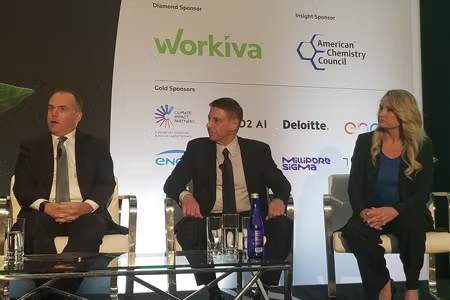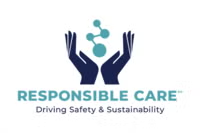
Last week I had the opportunity to attend and speak at the Reuters Responsible Business USA Summit in New York City. The two-day conference in early April convened sustainability professionals from a range of industries, and while many came with distinct perspectives, there were a lot of commonalities as well.
Just a few of the key topics covered at the summit included:
- How companies are working to balance growth and sustainability and embedding sustainability across their businesses.
- Where companies are on the path to decarbonization and net zero, and methodologies for collecting data.
- Why transparency and disclosure, as well as third-party validation, are important to drive rigor and confidence in reporting.
- How efforts to build an engaged, diverse and inclusive workforce are key to enabling a sustainable business.
In ACC’s panel session “The Chemical Industry’s Role in Helping Healthy Communities Grow Sustainably,” I was joined by leaders from two ACC member companies, Brittany Benko, Senior Vice President of EHS and Manufacturing Excellence for Huntsman Corporation and Tony Germinario, Manager of North American Environmental Expert Services with BASF.
We started off the session with a couple of level-setting poll questions for the audience, and, when asked about the importance of products and materials manufactured by the chemical industry in driving sustainability, more than 90% of respondents stated that “chemistry is critical to achieving sustainability goals.”
I was heartened to hear that our peers in the sustainability community recognize the role that chemistry plays in advancing sustainable solutions. ACC members provide the products, technologies and materials that enable a host of other industries to lower their carbon emissions, as well as create products that are durable, more energy efficient and safe to use.

As an upstream supplier for many of the companies attending the summit, ACC members manufacture the components that make these products possible. Just a few examples include:
- Chemicals like ethylene oxide that play an important role in developing batteries for electric vehicles.
- Polymers and composite materials used in glass and carbon-reinforced fiber for wind turbines and silicone-based chemistry enable components for solar panel cells.
- Plastics materials like PVC, polyurethane, films and polycarbonate used in building insulation, sealants, wraps and piping that help make buildings more energy efficient.
At the same time, our member companies recognize the need to reduce emissions in our own operations and are taking action to reduce the industrial GHG intensity of their supply chains, operations, and products. Meaningful emissions reduction will require a portfolio of solutions; there is no one-size-fits-all technology.
And we are making progress – ACC member companies have reduced their GHG intensity by 12% since 2017. With the demand for products made possible by chemistry growing, we are building our manufacturing capacity, while also working to continue to lower our carbon emissions.
Beyond decarbonization, our member companies are focused on initiatives and efforts to enhance resilience and quality of life in the communities where we operate. Brittany and Tony shared just some of the efforts that Huntsman and BASF, like many ACC member companies, are taking. This includes participating in local Community Advisory Panels to dialogue with community stakeholders and address their questions and concerns about facility operations, to collaborating with local governments and emergency response teams, to conducting science-based air monitoring near facilities, to developing STEM and technical scholarships to help prepare community residents with jobs in the chemical industry, and more.
As was echoed throughout the summit, none of us can address sustainability challenges alone. ACC and our members are building and growing relationships with our supply chains, our customers, policymakers and community residents to accelerate action on sustainability. The size of the challenge is considerable, but we are prepared to meet it.




